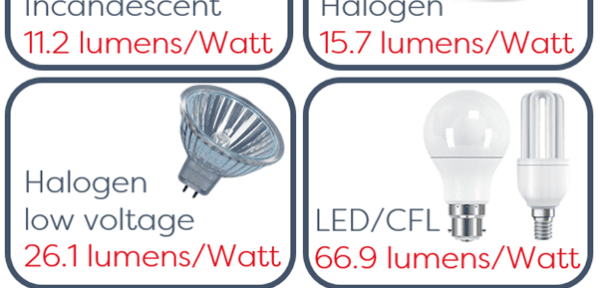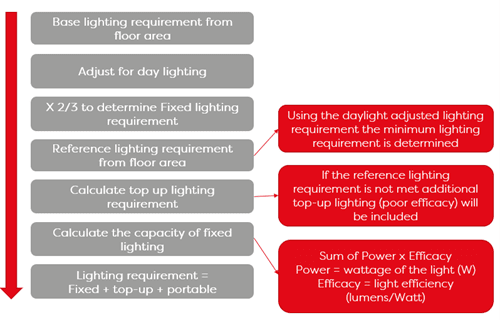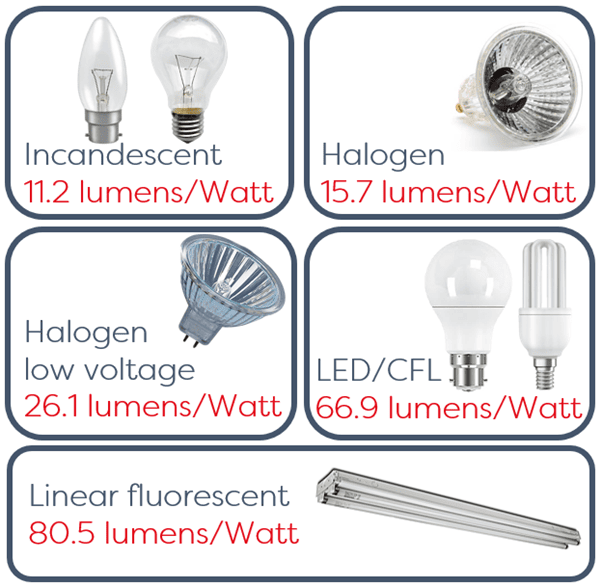SAP 10 – Changes to Lighting.

If you’re a regular reader of our technical bulletins, you’ll know that in our last two issues we looked at two of the methodological changes expected in the next version of SAP: hot water calculations and heating patterns. In this issue, we will take a closer look at another change to the methodology, which is the lighting calculations.
As homes become more energy efficient due to insulation and air tightness, much like hot water algorithms, lighting will account for a higher percentage of energy use, therefore, the calculations for lighting need to be more sophisticated to accurately model the energy used. The calculations also need to be updated to allow for new lighting technologies.
SAP 2012
The current method of calculating the lighting requirement is quite simplistic. The floor area is used to calculate a base energy requirement for lighting based on Tungsten lights. This energy is then adjusted for the proportion of low energy lights present, such as LED or CFL lights. This energy requirement is then adjusted for the daylighting which is based on the size, type and orientation of the windows present. In RdSAP, the window area is normally assumed with the orientation calculated using East.

Figure 1 – how lighting is calculated in SAP 2012
Currently SAP 2012 does not differentiate between different types of low energy lights or consider excessive or insufficient lighting.
SAP 10
The calculation for lighting in SAP 10 is more complex, as you can see from figure 2 below.

Figure 2 – SAP 10 lighting calculations
In the same way as SAP 2012, the floor area is used to calculate the base energy requirement along with an adjustment for daylighting and the fixed lighting requirement is then calculated. However, in SAP 10, a similar approach to passing Part L is taken and the actual situation is compared to a reference situation. If the reference lighting requirement is not met, additional “top-up” lighting (poor efficacy) will be included to meet the shortfall. If more lighting capacity is provided than the top of the reference range, the surplus will be used in the calculation of energy use (using the actual efficacy), thereby making sure properties designed with excessive lighting have the additional energy use taken into account.
The SAP 10 default efficacy for different types of lamps is shown below which demonstrates the amount of visible light per Watt. The most efficient lamp is the linear fluorescent as it achieves the highest amount of light per unit of energy. These lamps are commonly found in offices and kitchens.

At present, we are not aware of what a domestic energy assessor would be expected to collect exactly, but they would still be required to count the number of fixed lighting outlets and they should be able to differentiate between low energy light types, rather than just low energy and non-low energy. What should also be noted is that the current conventions require a DEA to divide the total number of downlighters by 2, but this would not be necessary as, instead, the total power of lights will be calculated.
Example
Let’s use a 100m² house with 50% low energy lights as an example. Using SAP 2012, the calculation would result in 600kWh per year, but using SAP 10, 50% incandescent and 50% LED results in 510 kWh per year meaning a 15% reduction in energy for lighting.
The impact?
For existing dwellings, these changes in methodology are unlikely to have a huge impact on the SAP rating; however, as mentioned earlier, now that homes are becoming better insulated and more energy efficient, lighting will account for a higher share of the energy used in our homes, so a more accurate calculation is a welcome change.
Remember, SAP 10 will not be adopted until there is an update to the Building Regulations and it has been refined. Once SAP 10 is refined, it will first be used for new-build properties for around 6 months, then it will be used in RdSAP for existing dwellings.